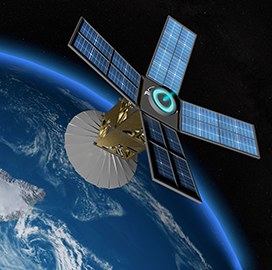NASA has selected eight teams to develop university-based technologies designed to advance the capacity of small spacecraft to support the agency’s Earth, lunar and deep space science and exploration missions.
The University SmallSat Technology Partnerships, or USTP, initiative aims to boost small spacecraft capabilities in three areas: Earth- and Global Navigation Satellite System-independent position navigation and timing; edge computing and machine learning architectures, software and devices; and high specific power systems and thermal control, NASA said Friday.
USTP participants will partner with NASA research centers to work on the three technology topic areas.
Under the first topic, Georgia Institute of Technology will collaborate with the Johnson Space Center in Houston, the California Institute of Technology with the Jet Propulsion Laboratory, or JPL, in Southern California, and the University of Minnesota with the Ames Research Center in California.
JPL will also work with the California State Polytechnic University Pomona and the University of Michigan on two separate projects under the second research area, while the Marshall Space Flight Center will partner with Utah State University.
The third topic area involves partnerships between Pennsylvania State University and the Glenn Research Center in Cleveland, as well as the University of Dayton and the Goddard Space Flight Center in Greenbelt, Maryland.





